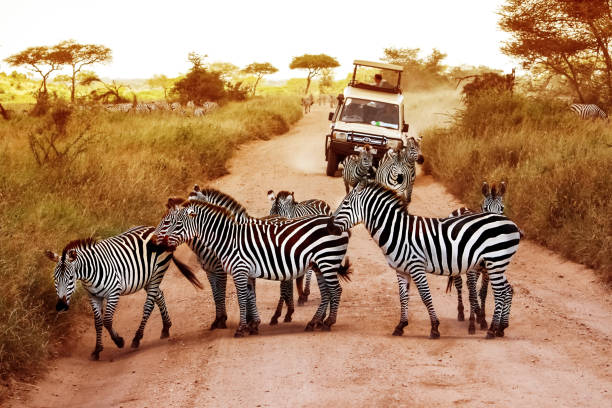A safari in Tanzania is one of the most unforgettable travel experiences in the world. From the Great Wildebeest Migration in Serengeti to the breathtaking Ngorongoro Crater and elephant herds in Tarangire National Park, timing your trip makes all the difference. If you are planning your adventure, knowing the best time to visit Tanzania for safari in 2025 is essential.
This complete guide explains the safari seasons, weather, wildlife highlights, and the best months to go on safari in Tanzania.
The Tanzania safari best time to visit depends on what you want to see. Tanzania’s climate is seasonal, with dry months offering easier wildlife viewing and wet months creating lush green landscapes. For many travelers in 2025, the timing also depends on:
The Great Migration river crossings (Serengeti).
The calving season when thousands of wildebeest are born.
Fewer crowds and better lodge deals.
Specific animal encounters (like big cats or rhinos).

Weather: Sunny, dry, little to no rain.
Wildlife: Animals gather around rivers and waterholes, making sightings easier.
Highlights:
July–September: The Great Migration river crossings in the Serengeti.
Excellent game viewing in Ngorongoro Crater and Tarangire.
Best For: First-time safari visitors, wildlife photography, Big Five sightings.
👉 2025 Tip: Book early for July–September since lodges sell out fast.
Weather: Light afternoon showers, landscapes become green.
Wildlife: Animals still visible, but more spread out.
Highlights:
Fewer tourists, more affordable safari prices.
Great for birdwatching as migratory species arrive.
Best For: Travelers seeking value and fewer crowds.
Weather: Warm, occasional showers.
Wildlife: The Great Migration calving season in southern Serengeti (Ndutu area). Over 500,000 wildebeest calves are born.
Highlights:
Predators like lions and cheetahs hunting newborn wildebeest.
Dramatic photography opportunities.
Best For: Witnessing new life, predator action, and family safaris.
👉 2025 Tip: February is the ultimate month for the calving season.
Weather: Heavy rains, muddy roads, some camps close.
Wildlife: Still present, but harder to track.
Highlights:
Lush green landscapes, stunning scenery.
Lowest safari prices in Tanzania.
Best For: Budget travelers, photographers seeking dramatic skies.
January–March: Calving season in southern Serengeti, great predator action.
April–May: Rainy season, fewer crowds, but some lodges close.
June: Dry season begins, animals gather near waterholes.
July–September: Best months for the Great Migration river crossings and peak safari.
October: End of dry season, still great wildlife viewing.
November: Short rains, quiet but rewarding safaris.
December: Start of calving migration, festive season safaris.
Serengeti National Park – Year-round, but July–September (river crossings) & February (calving) are unbeatable.
Ngorongoro Crater – Best in the dry season (June–October).
Tarangire National Park – Peak elephant viewing in August–October.
Lake Manyara – Great for birdwatching in the green season.
Selous (Nyerere) & Ruaha – Best during dry season for off-the-beaten-path safaris.
Q: When is the best time to see the Great Migration in 2025?
👉 July to September (river crossings) & February (calving).
Q: When is the cheapest time to go on safari in Tanzania?
👉 April–May during the long rains.
Q: What is the overall best time for first-time safari visitors?
👉 June–October for clear skies, easy wildlife viewing, and Big Five sightings.
The best time to visit Tanzania for safari in 2025 depends on what you want:
June–October → Peak season, Big Five sightings, and river crossings.
February → Calving season in Serengeti with dramatic predator encounters.
April–May → Budget-friendly, lush landscapes, fewer crowds.
No matter when you go, Tanzania promises incredible safari experiences year-round. With the right timing, your 2025 adventure will be unforgettable.